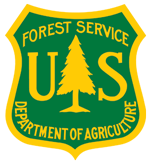-
 Are we in the midst of the sixth mass extinction? A view from the world of amphibians
Are we in the midst of the sixth mass extinction? A view from the world of amphibians
-
Many scientists argue that we are either entering or in the midst of the sixth great mass extinction. Intense human pressure, both direct and indirect, is having profound effects on natural environ- ments. The amphibians—frogs, salamanders, and caecilians—may be the only major group currently at risk globally. A detailed worldwide assessment and subsequent updates show that one- third or more of the 6,300 species are threatened with extinction. This trend is likely to accelerate because most amphibians occur in the tropics and have small geographic ranges that make them susceptible to extinction. The increasing pressure from habitat destruction and climate change is likely to have major impacts on narrowly adapted and distributed species. We show that salamanders on tropical mountains are particularly at risk. A new and significant threat to amphibians is a virulent, emerging infec- tious disease, chytridiomycosis, which appears to be globally distributed, and its effects may be exacerbated by global warming. This disease, which is caused by a fungal pathogen and implicated in serious declines and extinctions of >200 species of amphibians, poses the greatest threat to biodiversity of any known disease. Our data for frogs in the Sierra Nevada of California show that the fungus is having a devastating impact on native species, already weakened by the effects of pollution and introduced predators. A general message from amphibians is that we may have little time to stave off a potential mass extinction.
chytridiomycosis climate change population declines Batrachochytrium dendrobatidis emerging disease
Located in
Resources
/
Climate Science Documents
-
 Assessing the impacts of livestock production on biodiversity in rangeland ecosystems
Assessing the impacts of livestock production on biodiversity in rangeland ecosystems
-
Biodiversity in rangelands is decreasing, due to intense utilization for livestock production and conversion of rangeland into cropland; yet the outlook of rangeland biodiversity has not been considered in view of future global demand for food. Here we assess the impact of future livestock production on the global rangelands area and their biodiversity. First we formalized exist- ing knowledge about livestock grazing impacts on biodiversity, expressed in mean species abundance (MSA) of the original rangeland native species assemblages, through metaanalysis of peer-reviewed literature. MSA values, ranging from 1 in natural rangelands to 0.3 in man-made grasslands, were entered in the IMAGE-GLOBIO model. This model was used to assess the impact of change in food demand and livestock production on future rangeland biodiversity. The model revealed remarkable regional variation in impact on rangeland area and MSA between two agricultural production scenarios. The area of used rangelands slightly increases globally between 2000 and 2050 in the baseline scenario and reduces under a scenario of enhanced uptake of resource-efficient production technologies increasing production [high levels of agricultural knowledge, science, and technology (high-AKST)], particularly in Africa. Both scenarios suggest a global decrease in MSA for rangelands until 2050. The contribution of livestock grazing to MSA loss is, however, expected to diminish after 2030, in particular in Africa under the high-AKST scenario. Policies fostering agricultural intensification can reduce the overall pressure on rangeland biodiversity, but additional measures, addressing factors such as climate change and infrastructural development, are necessary to totally halt biodiversity loss.
dose-response model | intactness | land use
Located in
Resources
/
Climate Science Documents
-
 Barking up the Wrong Tree? Forest Sustainability in the wake of Emerging Bioenergy Policies
Barking up the Wrong Tree? Forest Sustainability in the wake of Emerging Bioenergy Policies
-
The spotted owl controversy revealed that federal forest management policies alone could not guarantee functioning forest ecosystems. At the same time as the owl’s listing, agreements made at the 1992 Rio Earth Summit highlighted the mounting pressures on natural systems, thus unofficially marking the advent of sustainable forestry management (SFM).2 While threats to forest ecosystems from traditional logging practices certainly remain,3 developed and developing countries have shifted generally toward more sustainable forest management, at least on paper, including codifying various sustainability indicators in public laws.4 Nevertheless, dark policy clouds are gathering on the forest management horizon. Scientific consensus has grown in recent years around a new and arguably more onerous threat to all of the world’s ecosystems—climate change. Governments’ responses have focused on bioenergy policies aimed
at curtailing anthropogenic greenhouse gas (GHG) emissions, and mandatesfor renewables in energy supplies now abound worldwide.
[Vol. 37:000
Located in
Resources
/
Climate Science Documents
-
 Beyond Reserves and Corridors: Policy Solutions to Facilitate the Movement of Plants and Animals in a Changing Climate
Beyond Reserves and Corridors: Policy Solutions to Facilitate the Movement of Plants and Animals in a Changing Climate
-
As the Earth’s climate changes, many species will have to move across human-dominated landscapes to track suitable climates and changing ecosystems. Given the magnitude of projected future climate change, expanding and connecting reserve networks—two of the most commonly recommended adaptation strategies for protecting biodiversity in a changing climate—will be necessary but insufficient for preventing climate-induced extinctions. In the present article, we explore additional policy options that could be implemented to facilitate species movements in a changing climate. We discuss both existing and new policies that have the potential to increase landscape permeability, protect species on the move, and physically move species to address climate change.
Keywords: climate change, adaptation, species movement, policy
Located in
Resources
/
Climate Science Documents
-
 BOTANY AND A CHANGING WORLD: INTRODUCTION TO THE SPECIAL ISSUE ON GLOBAL BIOLOGICAL CHANGE
BOTANY AND A CHANGING WORLD: INTRODUCTION TO THE SPECIAL ISSUE ON GLOBAL BIOLOGICAL CHANGE
-
The impacts of global change have heightened the need to understand how organisms respond to and influence these changes. Can we forecast how change at the global scale may lead to biological change? Can we identify systems, processes, and organisms that are most vulnerable to global changes? Can we use this understanding to enhance resilience to global changes? This special issue on global biological change emphasizes the integration of botanical information at different biological levels to gain perspective on the direct and indirect effects of global change. Contributions span a range of spatial scales and include both ecological and evolutionary timescales and highlight work across levels of organization, including cellular and physiological processes, individuals, populations, and ecosystems. Integrative botanical approaches to global change are critical for the eco- logical and evolutionary insights they provide and for the implications these studies have for species conservation and ecosys- tem management.
Key words: community dynamics; flowering phenology; functional traits; global biological change; invasive species; land-use patterns; plant–microbial interactions; species interactions.
Located in
Resources
/
Climate Science Documents
-
 Brownness of organics in aerosols from biomass burning linked to their black carbon content
Brownness of organics in aerosols from biomass burning linked to their black carbon content
-
Atmospheric particulate matter plays an important role in the Earth’s radiative balance. Over the past two decades, it has been established that a portion of particulate matter, black carbon, absorbs significant amounts of light and exerts a warming effect rivalling that of anthropogenic carbon dioxide1,2. Most climate models treat black carbon as the sole light-absorbing carbonaceous particulate. However, some organic aerosols, dubbed brown carbon and mainly associated with biomass burning emissions3–6 , also absorbs light7 . Unlike black carbon, whose light absorption properties are well understood8, brown carbon comprises a wide range of poorly characterized compounds that exhibit highly variable absorptivities, with reported values spanning two orders of magnitude3–6,9,10. Here we present smog chamber experiments to characterize the effective absorptivity of organic aerosol from biomass burning under a range of conditions. We show that brown carbon in emissions from biomass burning is associated mostly with organic compounds of extremely low volatility11. In addition, we find that the effective absorptivity of organic aerosol in biomass burning emissions can be parameterized as a function of the ratio of black carbon to organic aerosol, indicating that aerosol absorptivity depends largely on burn conditions, not fuel type. We conclude that brown carbon from biomass burning can be an important factor in aerosol radiative forcing.
Located in
Resources
/
Climate Science Documents
-
 Can forest management be used to sustain water-based ecosystem services in the face of climate change?
Can forest management be used to sustain water-based ecosystem services in the face of climate change?
-
Forested watersheds, an important provider of ecosystems services related to water supply, can have their structure, function, and resulting streamflow substantially altered by land use and land cover. Using a retrospective analysis and synthesis of long-term climate and streamflow data (75 years) from six watersheds differing in management histories we explored whether streamflow responded differently to variation in annual temperature and extreme precipitation than unmanaged watersheds. We show significant increases in temperature and the frequency of extreme wet and dry years since the 1980s. Response models explained almost all streamflow variability (adjusted R2 . 0.99). In all cases, changing land use altered streamflow. Observed watershed responses differed significantly in wet and dry extreme years in all but a stand managed as a coppice forest. Converting deciduous stands to pine altered the streamflow response to extreme annual precipitation the most; the apparent frequency of observed extreme wet years decreased on average by sevenfold. This increased soil water storage may reduce flood risk in wet years, but create conditions that could exacerbate drought. Forest management can potentially mitigate extreme annual precipitation associated with climate change; however, offsetting effects suggest the need for spatially explicit analyses of risk and vulnerability.
Located in
Resources
/
Climate Science Documents
-
 Carbon debt and carbon sequestration parity in forest bioenergy production
Carbon debt and carbon sequestration parity in forest bioenergy production
-
The capacity for forests to aid in climate change mitigation efforts is substantial but will ultimately depend on their management. If forests remain unharvested, they can further mitigate the increases in atmospheric CO2 that result from fossil fuel combustion and deforestation. Alternatively, they can be harvested for bioenergy production and serve as a substitute for fossil fuels, though such a practice could reduce terrestrial C storage and thereby increase atmospheric CO2 concentrations in the near-term. Here, we used an ecosystem simulation model to ascertain the effectiveness of using forest bioenergy as a substitute for fossil fuels, drawing from a broad range of land-use histories, harvesting regimes, ecosystem characteristics, and bioenergy conversion effi- ciencies. Results demonstrate that the times required for bioenergy substitutions to repay the C Debt incurred from biomass harvest are usually much shorter (< 100 years) than the time required for bioenergy production to substitute the amount of C that would be stored if the forest were left unharvested entirely, a point we refer to as C Sequestration Parity. The effectiveness of substituting woody bioenergy for fossil fuels is highly dependent on the factors that determine bioenergy conversion efficiency, such as the C emissions released during the har- vest, transport, and firing of woody biomass. Consideration of the frequency and intensity of biomass harvests should also be given; performing total harvests (clear-cutting) at high-frequency may produce more bioenergy than less intensive harvesting regimes but may decrease C storage and thereby prolong the time required to achieve C Sequestration Parity.
Keywords: bioenergy, biofuel, C cycle, C sequestration, forest management
Located in
Resources
/
Climate Science Documents
-
 Carbon Dynamics of the Forest Sector
Carbon Dynamics of the Forest Sector
-
Main points: The basic ecosystem science behind carbon dynamics in forests is relatively straightforward (really!).This science doesn’t seem to be applied very routinely in the policy arena. This mismatch is undermining the potential of the forest sector in helping to mitigate greenhouse gases in the atmosphere
Located in
Resources
/
Climate Science Documents
-
 Carbon in idle croplands
Carbon in idle croplands
-
The collapse of the Soviet Union had diverse consequences, not least the abandonment of crop cultivation in many areas. One result has been the vast accumulation of soil organic carbon in the areas affected.
Located in
Resources
/
Climate Science Documents























